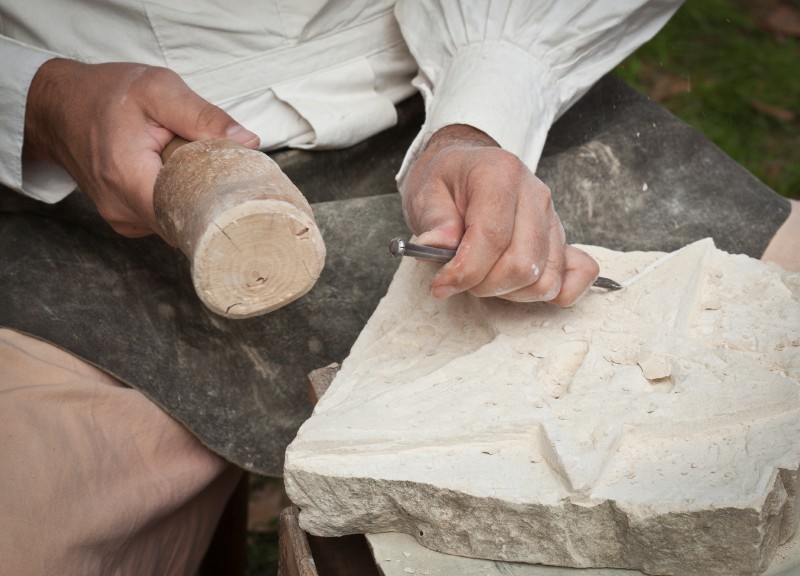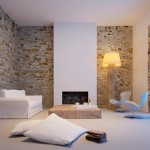If you decide to open the inside of your home to natural stone, you have opted for a durable, chic material that requires little maintenance.
Stone works in numerous places in all rooms: interior and exterior walls floors, walls and retaining walls, staircase, wine cellar, work surface in the kitchen, vanity top in the bathroom.

A stone floor is the most solid and durable there is. To make it more ecological, use lime mortar during installation. The most widely-used stones are slate, granite, limestone, marble and quartz, as paving stones or slabs. They allow for all sorts of possibilities in terms of finishes depending on the desired look: sponging, sanding, polishing.
For exterior paving, don’t forget to establish a minimum 1.5% slope to facilitate rainwater drainage.
For the kitchen work surface, granite is the ideal material since it is wear-resistant. It cannot be scratched or marred. It is easy to wash, making it hygienic, and it does not need any special treatment. Since little is needed to make the work surface, it would be best to opt for recycled granite. This will offset the damage to the environment from extracting and shipping the material, especially if it comes from far away.
Marble and limestone have the flaw of staining easily. Waterproofing wouldn’t hurt. Quartz and slate also make great work surfaces.

If you already have a stone wall and you would like to freshen it up, regardless of the instrument you use to strip it, be delicate. Once the work is completed, clean the surface with a brush. Clean the surface again once you’ve carved the joints. If you plan to wash it on a regular basis, think about coating the entire surface with waterproofing.
You may find the following two possibilities interesting: dry stone consists in stacking them on top of each other without using mortar or a binding agent; cobblestones are chiseled blocks of rock that do not require any exterior coating.
Reference:
Bricoler sain pour mieux vivre chez soi, Marcel Guedj, Fleurus, 2009, 253 pages
Photos: iStock.com

